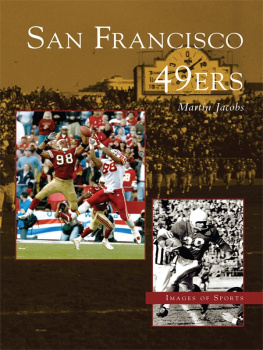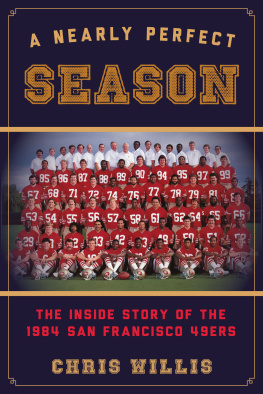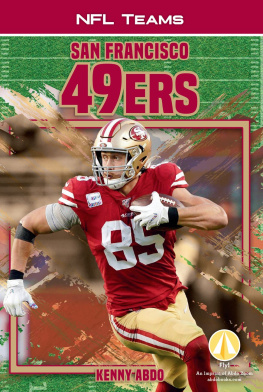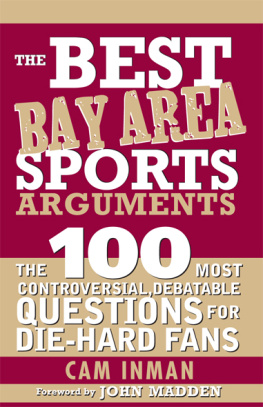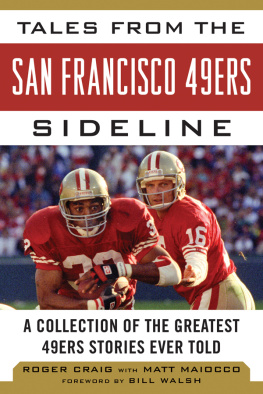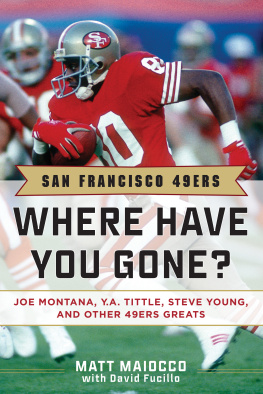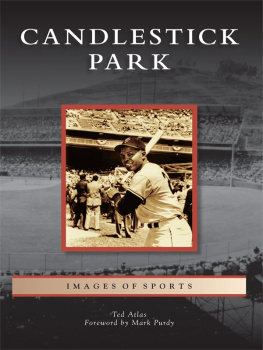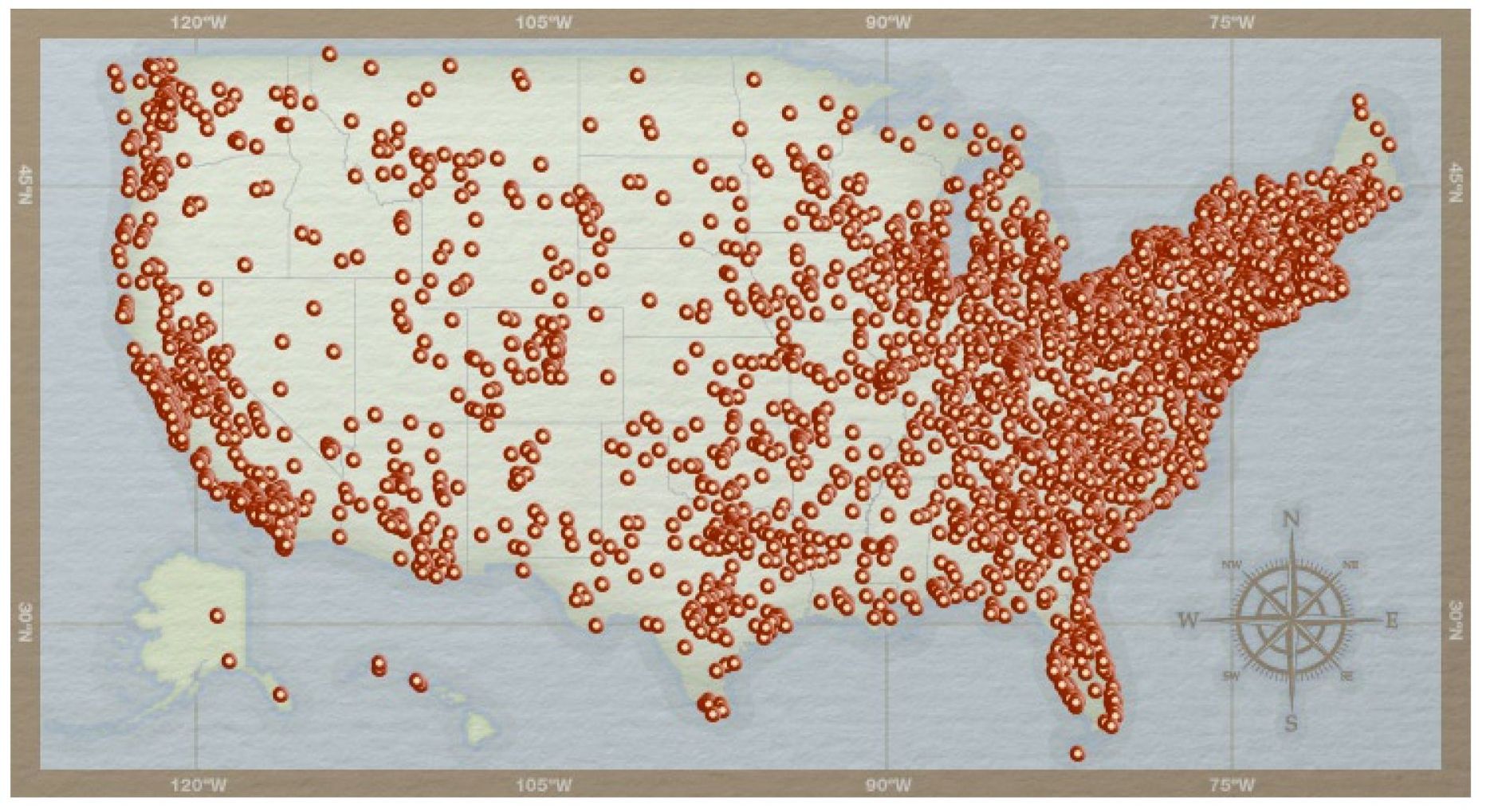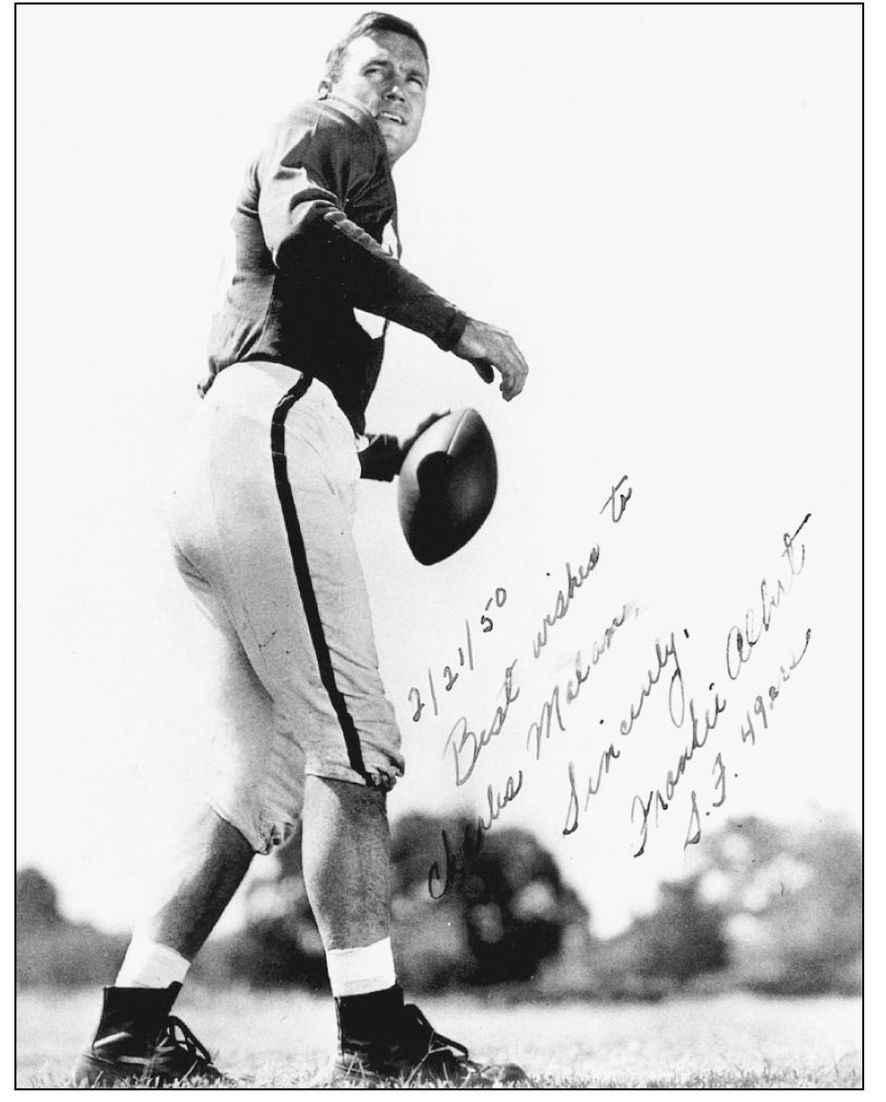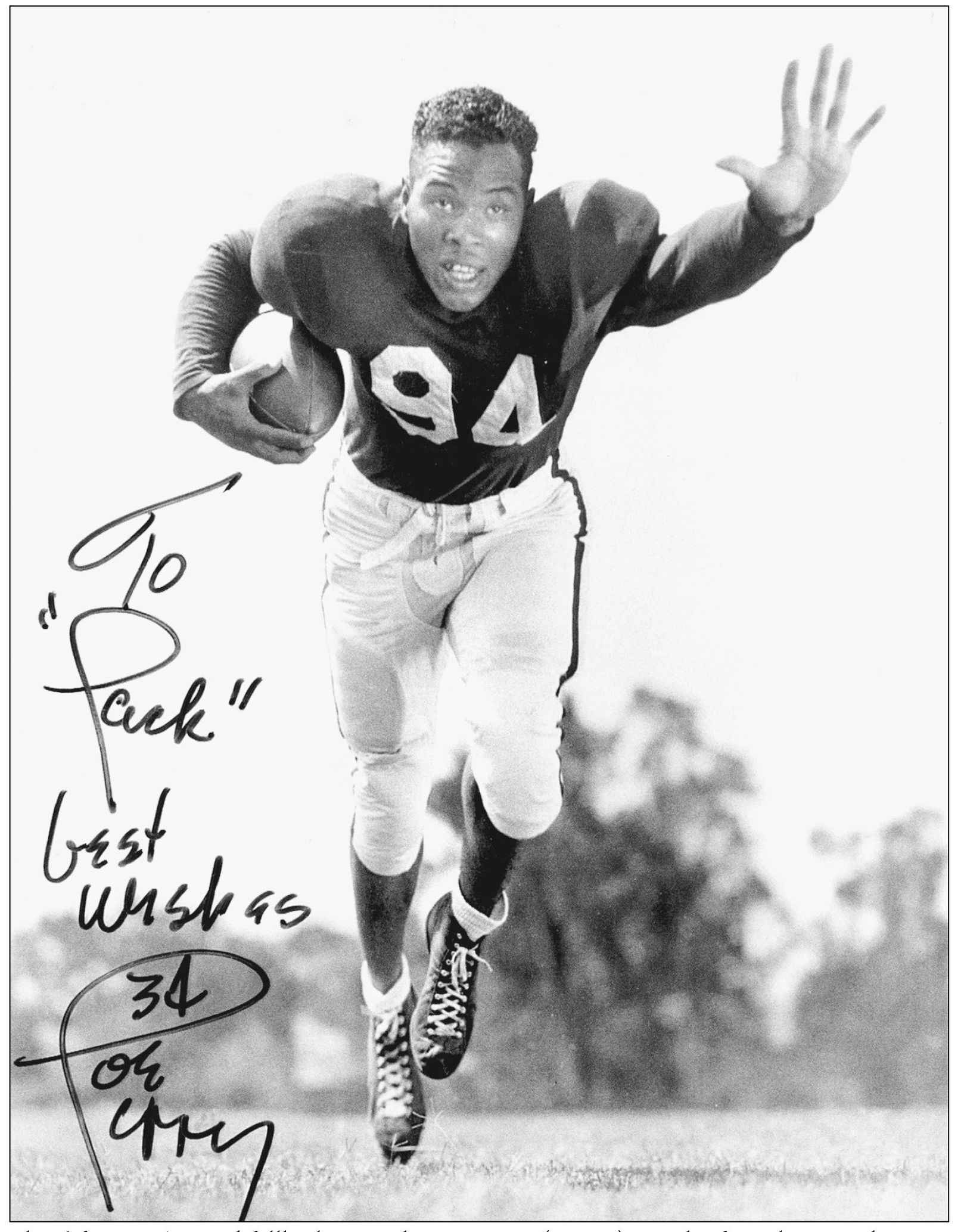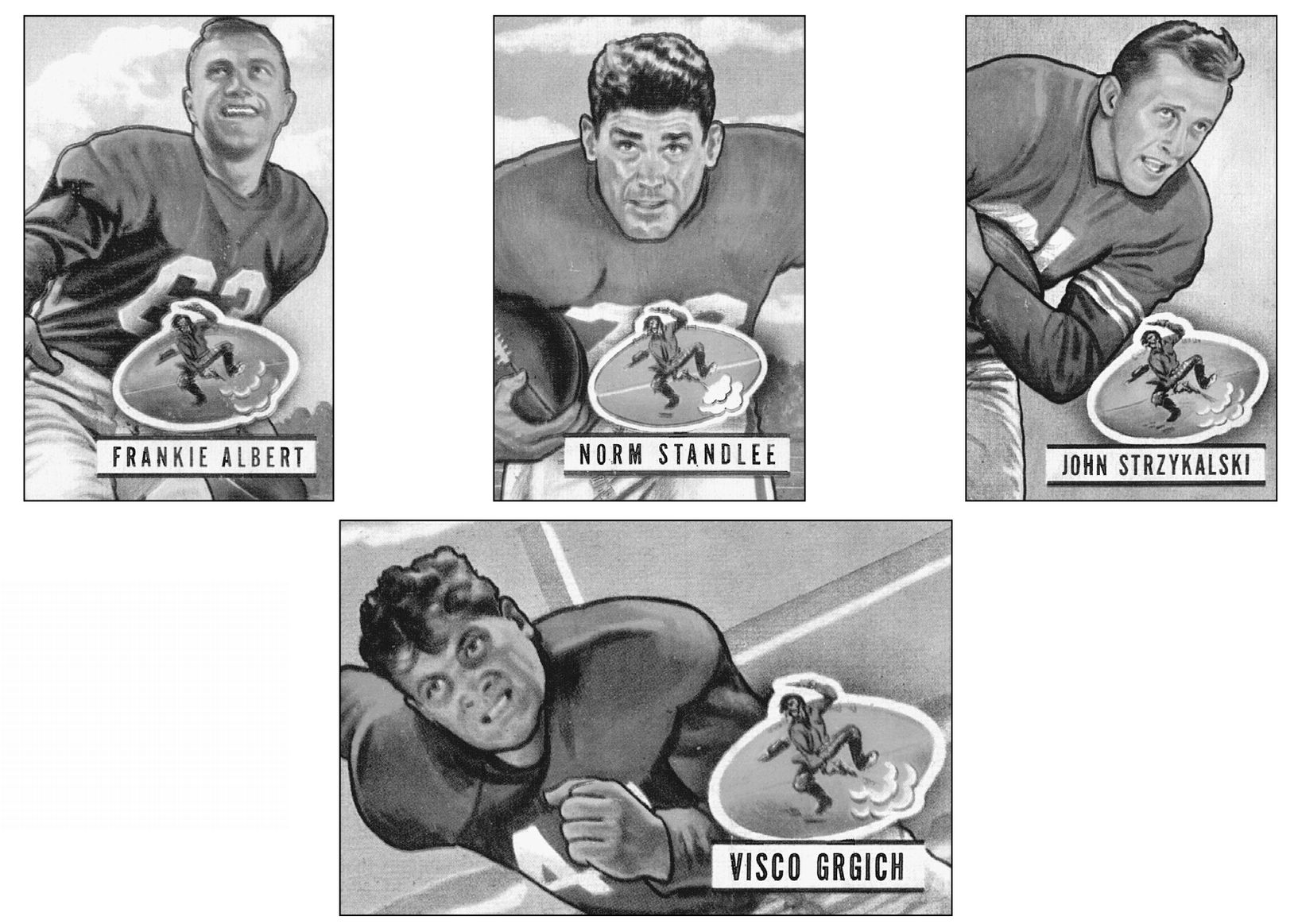ONE
Off to a Running Start
As a member of the AAFC in 1946, the 49ers were determined to sign good players while building a team from scratch. They were supremely challenged by having to compete against the powerful NFL. And they knew full well what it would entail.
Frankie Albert had been drafted by the Chicago Bears in 1942, but did not report because of his commitments to the Navy. After Albert finished his tour of duty, he signed with the 49ers instead. The Bears underwent additional grief when Norm Standlee, a fullback on the 1941 Bears championship team, defected to the 49ers.
Parker Hall and Len Eshmont, another pair of ex-NFL luminaries, abandoned their respective teams to join the 49ers. Bruno Banducci, the ex-Stanford and Eagles guard, deserted Philadelphia for San Francisco. This powerful nucleus of stalwart 49ers took off in high gear as a club on August 24, 1946, defeating the Los Angeles Dons 17-7 in their first preseason game in San Diego. The following week they downed the Chicago Rockets 34-13 in their San Francisco debut. The 49ers finished the season with a 9-5 record, good enough for second place in their divisionnot bad for a newborn competitor scratching for the first time in the AAFC field.
In the spring of 1947, there was breaking news of a possible trade with the Los Angeles Dons involving Frankie Albert and Armys Touchdown Twins, Glenn Davis and Tom Blanchard. The trade was squashed, though, as the Army refused them both furloughs to play for the 49ers.
The 49ers started off the 1947 season with almost the same players as the previous year. Again they finished second to the Cleveland Browns in their division with an 8-4-2 record. The 49ers couldnt beat either the Browns or Yankees in four attempts, and suffered ties with Baltimore and Buffalo. However, the home crowds were increasing as a record 54,325 came out to watch Otto Graham and the Browns beat the 49ers once again, 14-7.
After a second successful season, Shaw made sweeping changes in 49er team personnel in 1948, bringing in 19 rookies. They included Joe Perry, Bill Johnson, Gail Bruce, Forrest Hall, Veryl Lillywhite, Don Clark, Hal Shoener, and Jim Cason.
The 49ers went undefeated in their first 10 games, and then pummeled the Yankees 41-0 at Kezar before a sellout crowd. The team was averaging five touchdowns a game when they faced the undefeated Browns before a record 82,729 fans in Cleveland. The Browns once again prevailed, 14-7, knocking the 49ers from first place. A few weeks later, the Browns struck again by beating the 49ers 31-28, eliminating them from a division title. The 49ers finished with a 12-2 record and were tagged with another second-place honor.
The 49ers in 1948 established three all-new pro records: 495 total points scored, 3,844 yards gained rushing, and 5,767 yards of total offense. Albert set an AAFC record with 29 touchdown passes. End Alyn Beals, running back John Strzykalski, and tackle John Woudenberg were All-Pro first-team selections.
On the field, the 49ers of 1949 took up where they left off the year before. Led by Joe Perrys rushing and Alyn Beals receiving, they won four of their first five games. On October 9, the 49ers bumped heads with the mighty Browns, who had won 26 straight games, including three ties, since losing in October 1947. Jammed into Kezar, 60,000 frenzied fans watched the 49ers dominate of the Browns, routing them 56-28. Joe Perry had his best day rushing for 156 yards.
The following week the 49ers clipped the Bills 51-7, but lost one of their star running backs, Johnny Strzykalski, to a broken leg. Still, the 49ers earned a playoff berth by beating the Colts, Dons, and the Yankees to close out the season with a 9-3 record.
The 49ers made their first playoff appearance on December 4, 1949, and beat the Yankees 17-7 to set up a showdown with the Browns in Cleveland. The game was played in miserable weather and the 49ers lost 21-7. Each 49er had earned a grand total of $172.61 that memorable day.
The defeat was overshadowed by the stunning news that the AAFC had folded, but for the 49ers the news was a blessing in disguise. San Francisco, Cleveland, and Baltimore were invited to join the ranks of the elite NFL. This was what Tony Morabito had hoped for all along.
From the clubhouse to the front office, not a whit of change needed to be made as a consequence of the merger. The NFL greeted the 49ers with open arms, and the San Francisco teammates could sense their pocket change growing rapidly in eager anticipation.
Fullback Norm Standlee (no. 72), at 6-foot-2 and 245 pounds, was known as the Big Chief for living over a firehouse. He was the 49ers first team captain and came to them after World War II to become a fullback and a bone-crushing inside linebacker.
Frankie Albert (no. 63), the T formation wizard at 5-foot-10 and 170 pounds, was the first 49er quarterback in 1946. He was a Bay Area hero from the Stanford University Rose Bowl team and dazzled the crowds with his magic. He was All-Pro from 1946 to 1950. After his playing days were over, he coached the 49ers from 1956 to 1958.
The 6-foot, 195-pound fullback Joe The Jet Perry (no. 94) was the first player in the NFL to gain 1,000 yards in two consecutive seasons (19541955). His 7,344 rushing yards places him first in 49ers all-time rushing. Perry finished his career with 12,505 combined yards. Perry had 18 100-yard games during his career and is tied with Roger Craig with 50 career rushing touchdowns. Perry was inducted into the Hall of Fame in 1970.
These are original 1946 49er player gum cards produced by the Bowman Gum Company.

